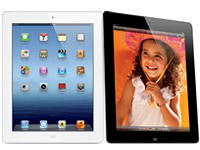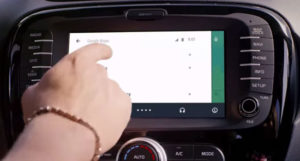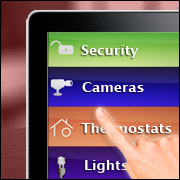
Nearly three years have passed since Apple first introduced its iPad, and the company still enjoys the largest market share in this space. This statement may seem a natural conclusion because Apple almost single-handedly reinvigorated this product category; however, creating a market does not guarantee a sustained monopolistic hold. This nascent market got crowded very quickly.
Many new players announced and rapidly deployed their own tablets, but in this fast-moving, highly competitive environment, some simply could not deliver. HTC discontinued sale of its Flyer tablet after less than a year on the market. Pandigital declared bankruptcy in mid-2012. Other companies — notably BlackBerry — have indicated that tablets will no longer play a role in future business endeavors. Still, Android-based tablets from Amazon, Samsung, and others have chipped away at Apple’s dominance; the company’s market share has declined from nearly 90 percent in 2010 to about 55 percent by year-end 2012.
Despite the loss of some early players, today’s tablet market continues to expand in number of manufacturers and products. That diversity is not confined to low-end devices sold in big box retailers. Recent entrants include tech giants Google and Microsoft. Both companies are already established in the tablet market with their operating systems, and they hope to make inroads with their own branded hardware.
Retailers Amazon and Barnes & Noble established a foothold in the tablet market by springboarding off the success of their e-reader devices. Both followed Apple’s lead by developing a proprietary content ecosystem around their hardware. After three years of churn in the tablet market, six top-tier tablet brands have emerged.
6 Major Contenders
- Apple: Apple introduced the first generation of the iPad on April 3, 2010, selling 14.8 million units by the end of that year. The iPad 2 debuted 11 months later, and Apple experienced a significant production backlog due to strong demand. Apple released its third-generation iPad on March 26, 2012, but discontinued that version upon the release of the iPad with Retina display on Oct. 23, 2012.
The iPad mini made its debut on the same day, marking Apple’s venture into the market for so-called “tweeners,” which the company classifies as smaller-screen devices too big to be a smartphone but too small to compete with tablets. iPad sales for 2012 totaled 65.7 million, a 62 percent increase over the 40.5 million units sold in 2011. In the first quarter of 2013, the company announced larger storage capacity for the iPad with Retina display and has already reported shipments of 19.5 million units. Altogether, Apple has sold more than 140 million iPads since the device’s launch in 2010.
- Amazon: The online retailer had a significant presence in the portable devices market with its Kindle e-reader when it announced its full-featured tablet, the Android-powered Kindle Fire, in September of 2011. A year later, the company announced a new lineup of Kindle Fire HD devices as well as a 4G/LTE-enabled version of the larger option.
Like Apple, Amazon designed its tablet to serve as a delivery mechanism for its digital content ecosystem, including e-books, apps, music, video, and more. Unlike Apple, Amazon is a major online retailer of physical goods, and the Kindle serves as an additional outlet for the sale of physical/digital goods, generating additional revenue for Amazon.
- Barnes & Noble: In November 2009, Barnes & Noble released its Nook 1st Edition, an e-reader that combined an e-paper screen with a smaller color LCD screen used for navigation and input. Over the course of the next two years, the company released its Nook Color (November 2010) and Nook Tablet (November 2011). Both devices featured full-color multitouch screens, and were discontinued following the September 2012 launch of Barnes & Noble’s most recent tablets — the 7-inch Nook HD and the 9-inch Nook HD+.
Similar to the Apple and Amazon offerings, the Barnes & Noble tablets are geared toward delivering content from the B&N ecosystem. Barnes & Noble differs from its competitors in that its direct sales are primarily books and magazines, and the company supplements those revenues with the selling of apps, music, games and movies in the Nook storefront.
Barnes & Noble recently announced a significant loss in its Nook e-reader division in its most-recent fourth quarter. As a result, the company will turn to third parties to manufacture the color version of the Nook but keep the black-and-white version in house.
- Samsung: Korean conglomerate Samsung has released a variety of Android-powered tablets, beginning in November 2010 with the 7-inch Galaxy Tab. Larger versions with 8.9- and 10.1-inch screens were released in 2011, and a new 10.1-inch Note tablet, with accompanying stylus, was released in 2012. Samsung has since released second generations of its 7- and 10.1-inch Galaxy Tab devices. Samsung plans on expanding its line of smartphones and tablets in 2013. So far, that expansion includes only the new Galaxy Note 8.0 and the Galaxy S4.
- Google: Search giant Google bequeathed its open source Android operating system to device manufacturers in 2008, but the company did not release an Android device of its own until January 2010: the Google Nexus One smartphone, manufactured by HTC. The first Google-branded tablets, the Nexus 7 and Nexus 10, hit the market in 2012. These two Google-branded tablets were built by two different OEMs: Asus manufactured the 7-inch tablet while Samsung built the 10-inch device. Google sold nearly 7 million units in 2012, vaulting it into fourth place behind Apple, Samsung and Amazon.
- Microsoft: Like Google, Microsoft had an early presence in the tablet market thanks to the Windows operating system. When it came to building its own hardware, Microsoft was relatively late to the game, releasing its first tablet — the Surface RT — in October 2012. Microsoft released the Surface Pro in February 2013, targeting professional users. Microsoft sold approximately 1 million Surface units in 2012, representing about 1 percent of the total market, based on Parks Associates estimates. Notably, Surface sales accounted for only one-quarter of all Windows-powered tablet sales in 2012, and the company recently announced it would be slashing prices on its models to try to drive up sales.
Still No. 1
Over the past two years, Apple has lost significant market share but still maintains strong brand recognition and a majority share. The remainder is up for grabs. Within the non-Apple portion of the market, no single manufacturer has managed to carve out a majority stake. Samsung, Amazon and Google have gained, but 13 percent of the market falls in the “Other” category, Parks Associates estimates. A significant number of tablet owners are turning to lesser-known brands or searching for lower-priced options.
If Apple’s share were to dip beneath the 50 percent mark after the 2013 holiday season, the market would still be best characterized as “Apple versus The Rest,” with Apple maintaining a plurality share. With new or updated iPad designs expected later in 2013, Apple will certainly fight to hold onto that majority share. The rest of the market will remain highly fragmented due to pricing pressure, a constant flow of new players, and continued product diversification.






































80% of smart phone users are on the android platform….
apple is a thing of the past…..
Only apple announces sales numbers. No one else has ever announced numbers -ever. Those "market share" numbers are based on analyst Shipped numbers for everyone but apple. The only accurate number is Internet usage of tablets – after all, that’s about as accurate as anything … iPad, 82% , kindle 7% , galaxy 3% and remainder split between the hundreds of android tablets. It’s the iPod market all over again. When it’s unsubsididized, no one willingly chooses android.